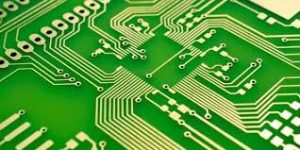Rework and Repair Affect Costs in a Printed Circuit Board
A printed circuit board, or PCB, is the foundation for electronic devices of all kinds. It’s used in everything from calculators to high-performance supercomputers. While a PCB may appear simple in appearance, the reality is that it is a complex labyrinth of copper wires connecting components to each other. In order to make a fully functional electronics device, manufacturers need to be able to produce the necessary circuit boards and associated assembly process quickly and efficiently. This requires a combination of specialized engineering knowledge and best practices to optimize the design process and achieve desired performance specifications, form factor, and cost.
The first step in the PCB assembly process is component procurement. This involves selecting and sourcing the necessary components based on a variety of factors including performance specifications, form factor, and availability. It is important to understand the requirements of each individual component and to be able to identify the appropriate component brokers to work with.
Once the required components have been procured, the next step is to fabricate the printed circuit board pcba. This is a multi-step process that involves creating the physical PCB based on the design files. This includes etching the copper traces, drilling holes for through-hole components and vias, applying solder mask and silkscreen layers, and other functions that are unique to the PCB.

How Does Rework and Repair Affect Costs in a Printed Circuit Board?
The final stage in the PCB assembly process is inspection and testing. This involves using methods such as visual inspection, automated optical inspection (AOI), and X-ray inspection to verify that the assembled PCB meets all design and performance specifications. In addition, the assembled PCB is subjected to in-circuit testing to verify that the circuitry works as intended.
Rework and repair is a vital part of the PCB assembly process. In many cases, the assembly process must be interrupted to rework or repair damaged or defective components. This can be time consuming and costly, especially for large volumes of production. However, the high costs of rework and repair can be mitigated by using the right tools and techniques.
For example, it is important to use a hot air station that provides sufficient power to pre heat the repair area to the reflow temperature of the target component. This will prevent damage to the component and to the surrounding surface. It is also important to use a repair flux that is compatible with the original solder paste. This will prevent chemical reactions that can lead to failure of the circuit board.
The global PCB rework and repair market is growing at a rapid pace due to increasing demand for compact features in electronic products. It is also expected to benefit from the rising adoption of Printed Wiring Boards by the automotive sector. However, the high operational costs associated with rework and repair are hampering the growth of this market. As a result, successful companies are beginning to realize that the cost of rework and repair can be managed by outsourcing some of these tasks to low-wage countries like Vietnam or India.



